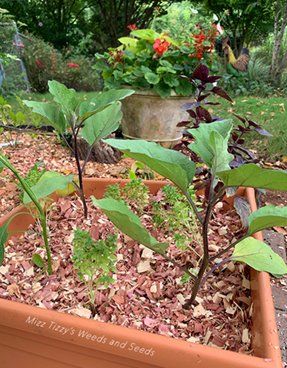Beginners Lessons on Growing 50 Day (or Longer) Veggies
in Pots or Small Garden Plots
Growing things in pots make it wonderful for people who may only have a patio facing east, south, or west and who would like to have some fresh produce at their fingertips. Here we are mixing veggies and herbs so you can make a meal in one pot. Below are some easy-to-follow directions and reasons to start this adventure and have great success. I am using the 50 Veggies as an example because you will then be able to produce more than one crop - you can redo your pots every six weeks if you want which would allow you quite a good haul to put up for the winter or consume when picked. Miriam and Kelly set up this great photoshoot so we could do this lesson for those who might wonder how to grow Veggies and other plants in pots or small plots.
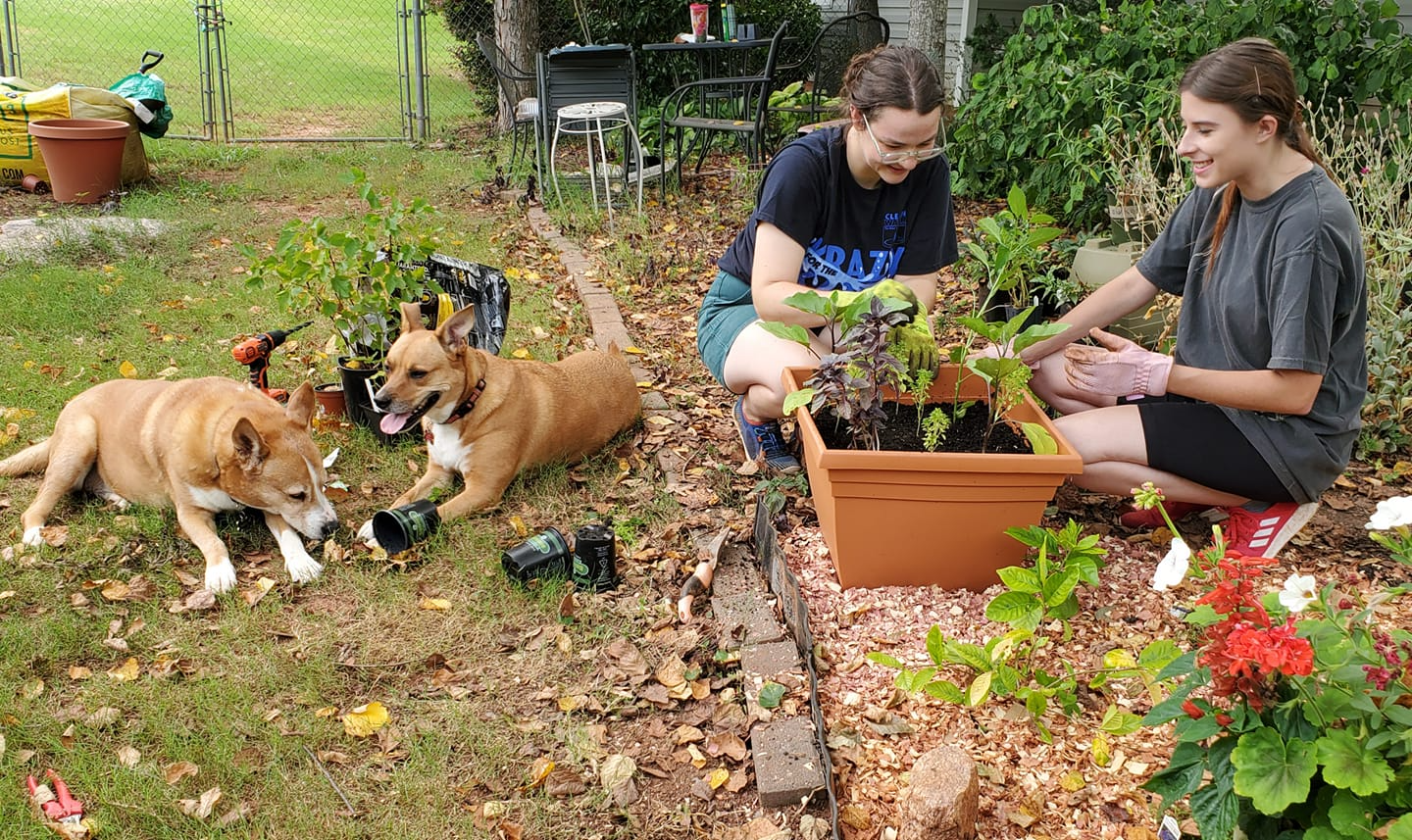
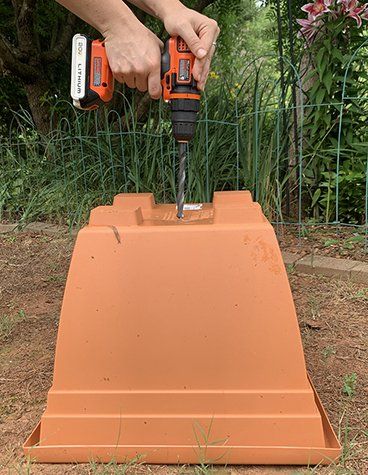
- 1 - When you purchase any pot make sure there is a hole for drainage in the bottom of the pot. If there is none you will have to make a few holes with your drill.
- 2 - Make sure that there are several small holes (about 1/4” in diameter) in several areas on the bottom. Also, remember if you are placing your pots in trays that they do not stand in water for more than maybe an hour unless it is a very hot and dry day.

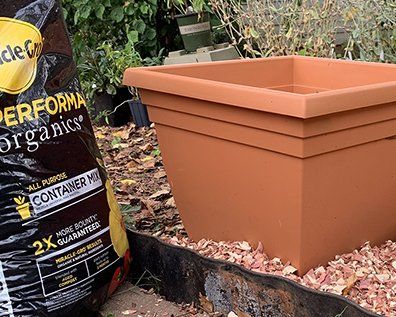
- 3 - The soil you should use in pots should be water-retaining potting soil that is very nourishing, and organic if possible, and you should also mix it with good compost. Because the plants will use up the moisture and nutrients in pots before you know it, it needs to be rich. Pay close attention to the dryness of your soil and also fertilize at a half-strength rate at least once a week. Remember that veggies, especially, are 90+% water and for healthy crops, you need this moisture and extra nutrition.
- 4 - Fill the pots to about 2” of the top rim. You will be planting in this so you will need that space plus the soil will settle and you will also need that room on top to soak the pots with water once you can poke your finger into the soil and it is dry to your second knuckle.
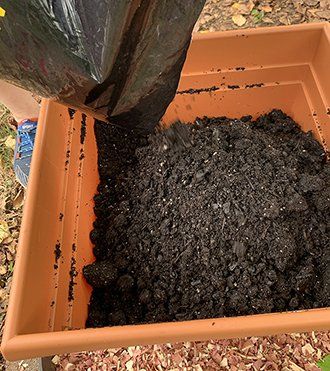
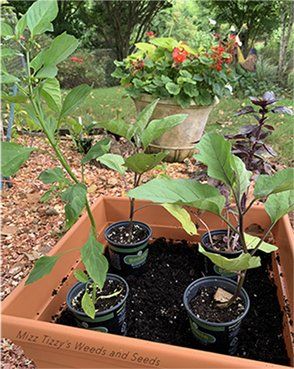
- 5 - Set your plants, or seeds, where you want them to grow in the pot. Here, we are making a Veggie and Herb Bouquet. Cubano Frying Pepper, Patio Baby Eggplants, and two types of Basil.
- 6 - Once you have decided where to place them check the roots. You can see in this photo that the roots are going around and around the inside of the pot. So you will need to ‘tease’ the roots which are easy to do. Spread the roots gently at the bottom and then pull them apart just a little bit to enable them to grow straight rather than continue to grow in a circle which is not good for the plant.
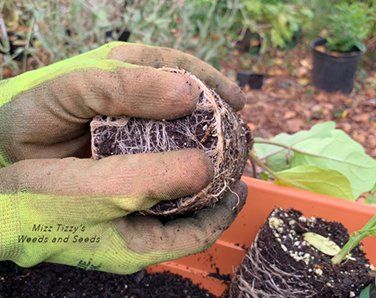
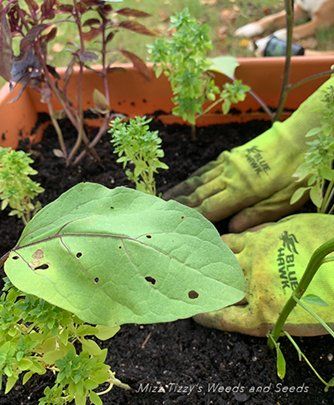
- 7 - Planting the pots is just so easy. When you get the rootball into the soil only cover it with your potting soil to the same level as the soil around the plant. Do not cover that top area as it could smother the plant.
- 8 - Here are just some more holes poked in the soil for the smaller rootballs of the dwarf basil which will almost grow as a ground cover beneath the larger pepper dark basil and eggplants, which will also help protect the soil from drying out too quickly, and keep the soil from overheating.

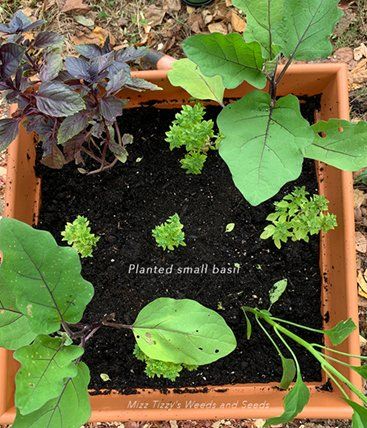
- 9 - The finished pot. You want to make sure that the pots you are growing things in are quite large especially if you are planting one of the Veggie Bouquets. They will need the room and the deeper soil in order to handle the demands of the plants in producing a crop. You can also grow the French Filet Green Beans in a pot as they only reach about an 18” tall bush and spread of about the same but they produce their hearts out.
- 10 - And last but not least, Miriam and Kelly have covered the top of the soil with Cedar Shavings, which will help with bug control, help hold moisture in, and shelter from excessive heat from the sun beating on the black soil. You will be able to start harvesting the herbs much sooner than the veggies. And the veggies will be ready in about 50 days.
